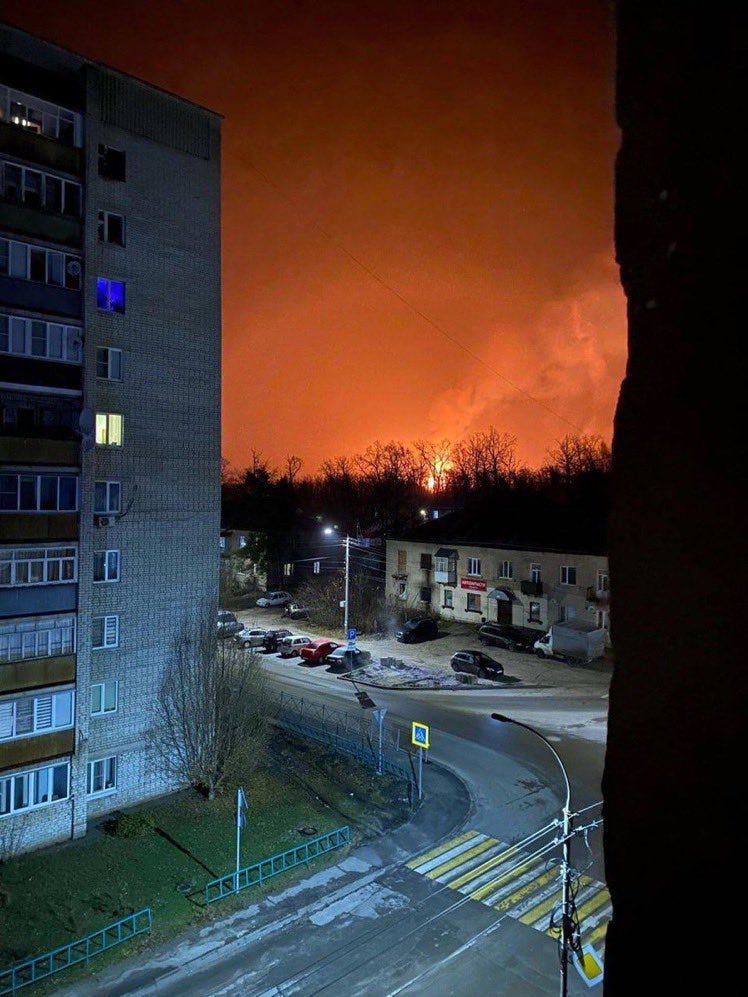Hi All,
I was planning last week on finishing my series on US foreign policy for the midweek piece, but then this attack was reported on 4 days ago.
I’ve been looking out for signs of such attacks for months—as they would signal that Ukraine is attempting to attack Russian weapons production in the most effective and efficient way—before its actually completed, while its being made or as its being sent to the area of battle (in what I call the pre-production, production or deployment phases of war). Its not easy thing for Ukraine to do—as that production is normally done in Russia far from the Ukrainian border. However, if Ukraine could do it consistently, it would open up the possibility of weakening Russian strength in marked ways for 2024. Indeed, this attack was quickly followed up by what look to be two other attacks inside Russia, one against Russian rail and then another just a few hours ago against another Russian munitions plant. As such—this has jumped very much to the top of my agenda and I really think its worth discussing.
Why Pre-Production/Production/Deployment Destruction of Munitions is Crucial
One of the most wrong headed ideas about war is that they are generally won in decisive battles. Actually, the best way to weaken your enemy is to deprive them of equipment before it reaches the area of battle. If a state at war can destroy the ability of its enemy to produce weapons by attacking factories, rail lines, or even its production of raw materials. etc, its much more effective that destroying it in direct combat. On the one hand destroying the infrastructure that is being used to build munitions built not only destroys the munitions being made, it lowers future production (its not easy to rebuild modern production facilities). And it does this before that equipment can be used against you. So you are depriving an enemy from having a munition it can use against you and depriving it of some future production—making probably twice as valuable in real terms.
Its one of the fundamental premises of my book How the War was Won: Air-Sea Power in World War II.1 The book argues that it was the ability of the Allies to destroy German and Japanese equipment before it reached the battlefield that proved decisive. In the book I divide this destruction down into three different phases (pre-production/production/destruction. I cant recap the whole book, but I can give you screenshots of when I introduce the discussion of the pre-production and production phases).
To summarize, by attacking the German and Japanese productive processes with air and sea power, the Allies destroyed far more equipment before it could be used against them, than the Axis powers actually were able to use on the battlefield. It also distorted German and Japanese production and diverted huge amounts of resources.
Now in this war, Ive long complained that Ukraine has been asked to fight with one hand tied behind its back. While Russia was free to attack Ukrainian economic infrastructure wherever and whenever it wanted (from the port facilities of Odessa to the power generation of Kyiv and most other cities), those states who have been aiding Ukraine have demanded that their equipment be used only in occupied Ukraine.
Keep reading with a 7-day free trial
Subscribe to Phillips’s Newsletter to keep reading this post and get 7 days of free access to the full post archives.





